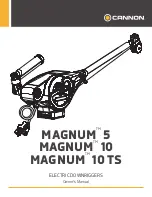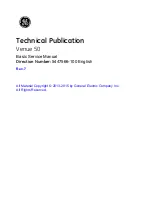
SCPI Command Structure
R&S
®
Scope Rider RTH
512
User Manual 1326.1578.02 ─ 12
Table A-3: Special characters
|
Parameters
A vertical stroke in parameter definitions indicates alternative possibilities in the sense of "or". The
effect of the command differs, depending on which parameter is used.
Example:
Definition:
HCOPy:PAGE:ORIentation LANDscape | PORTrait
Command
HCOP:PAGE:ORI LAND
specifies landscape orientation
Command
HCOP:PAGE:ORI PORT
specifies portrait orientation
Mnemonics
A selection of mnemonics with an identical effect exists for several commands. These mnemonics are
indicated in the same line; they are separated by a vertical stroke. Only one of these mnemonics
needs to be included in the header of the command. The effect of the command is independent of
which of the mnemonics is used.
Example:
Definition
SENSE:BANDwidth|BWIDth[:RESolution] <numeric_value>
The two following commands with identical meaning can be created:
SENS:BAND:RES 1
SENS:BWID:RES 1
[
]
Mnemonics in square brackets are optional and may be inserted into the header or omitted.
Example:
HCOPy[:IMMediate]
HCOP:IMM
is equivalent to
HCOP
{
}
Parameters in curly brackets are optional and can be inserted once or several times, or omitted.
Example:
SENSe:LIST:FREQuency <numeric_value>{,<numeric_value>}
The following are valid commands:
SENS:LIST:FREQ 10
SENS:LIST:FREQ 10,20
SENS:LIST:FREQ 10,20,30,40
A.5
Structure of a Command Line
A command line may consist of one or several commands. It is terminated by one of
the following:
●
<New Line>
●
<New Line> with EOI
●
EOI together with the last data byte
Several commands in a command line must be separated by a semicolon ";".
Example:
MMEM:COPY "Test1","MeasurementXY"
;:
HCOP:ITEM ALL
This command line contains two commands. The first command belongs to the MMEM
system, the second command belongs to the HCOP system. If the next command
belongs to a different command system, the semicolon is followed by a colon.
Structure of a Command Line
















































